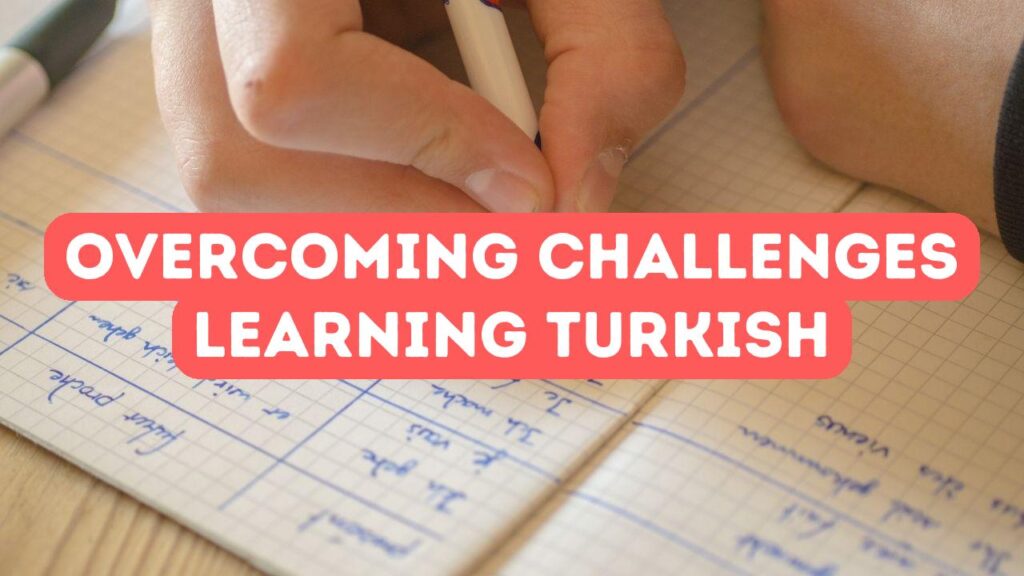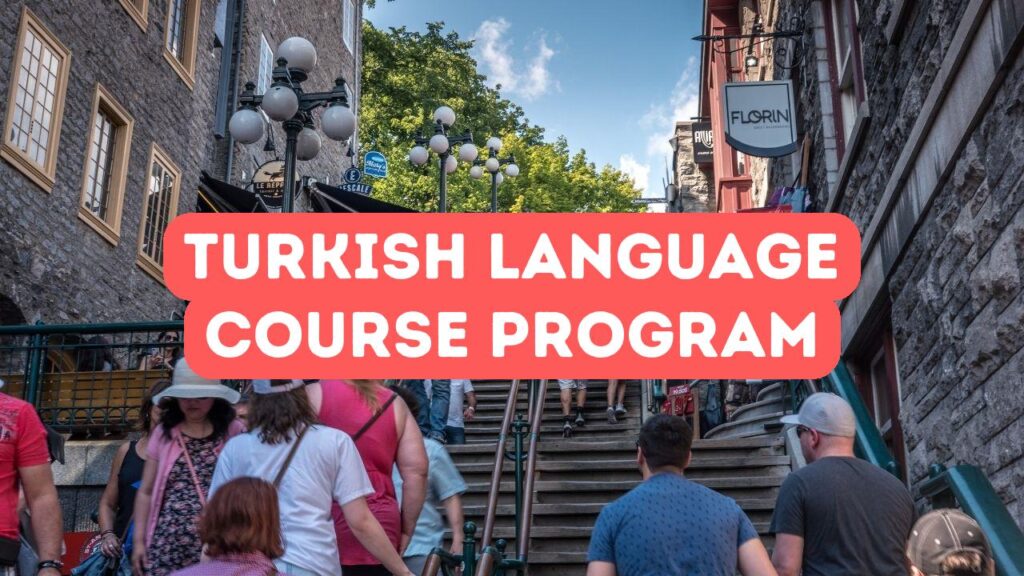Foreigners learning Turkish often face a maze of challenges that can feel as complex as the language itself. The twists and turns of new grammar rules, unfamiliar sounds, and often puzzling vocabulary can make the journey seem daunting. Among the most common hurdles are challenges in learning Turkish, which include the unique alphabet and pronunciation nuances. Overcoming Turkish language barriers might seem like scaling a linguistic mountain, but with the right tips for learning Turkish, the path becomes clearer. For instance, diving into authentic conversations and immersing oneself in Turkish culture can break down walls effectively. Recognizing and correcting common mistakes in Turkish is another key step toward fluency. Imagine piecing together a puzzle; each new word and rule fits into place, transforming confusion into understanding. By addressing these common pitfalls and arming yourself with strategic approaches, foreigners learning Turkish can find the journey both rewarding and achievable.
Navigating the Complexities of Turkish Grammar
Navigating Turkish grammar can be like deciphering a code for many foreigners learning Turkish. Its structure is vastly different from that of English, making the challenges in learning Turkish apparent. Turkish follows a Subject-Object-Verb order, standing in stark contrast to the patterns we’re used to. These complexities can seem overwhelming, heightening the sense of overcoming Turkish language barriers. But let’s break it down: imagine it as learning a new dance. At first, the steps may tangle your feet, but with practice, they become second nature. Utilizing tips for learning Turkish, such as focusing on sentence patterns and consistent practice, helps untangle these knots. Mistakes are inevitable, like stepping on toes while learning that dance, but recognizing common mistakes in Turkish is half the battle. Each error corrected is a step closer to fluency, transforming the daunting into the doable.
Understanding the vowel harmony in Turkish is another layer within the puzzle that foreigners learning Turkish must solve. This unique aspect of Turkish grammar may initially seem intimidating, as it requires words to conform to specific patterns based on the vowels they contain. Yet, just as a musician learns the rhythm of a song, so too can learners grasp this linguistic melody. Overcoming Turkish language barriers like vowel harmony starts with patience and attentive listening. By focusing on the harmony’s rhythm, individuals can slowly piece together the rules, akin to connecting musical notes in a composition. For those facing challenges in learning Turkish, maintaining a keen ear and practicing regularly will lift the fog. Recognizing common mistakes in Turkish, such as mixing up vowel sequences, helps smooth the journey. With these tips for learning Turkish at hand, learners gradually transform the cacophony of sounds into a harmonious understanding of the language.
Navigating the intricacies of Turkish grammar offers unique challenges to foreigners learning Turkish. Among the steepest hurdles is mastering the many suffixes, which alter meaning and function like a tailor stitching a custom garment. One minute, you’re wearing a simple shirt; the next, it transforms into a formal suit—the same happens with Turkish words morphing with suffixes. This flexibility in word formation can confound learners, making overcoming Turkish language barriers feel like chasing shadows. However, embracing these peculiarities with the right strategies simplifies it. Diving into real-life exercises provides effective tips for learning Turkish, allowing these patterns to reveal themselves naturally. Treat every error as a stepping stone, recognizing common mistakes in Turkish, to shift confusion into clarity. With persistence, the complexities of these structures become not just clearer but also rewarding, turning turmoil into triumph for those on this linguistic quest.
Effective Strategies for Vocabulary Acquisition
Building a robust vocabulary is like assembling the foundation of a grand house; it’s crucial for any foreigner learning Turkish. Many learners stumble over challenges in learning Turkish vocabulary, often feeling like they’re caught in a whirlwind of words. To overcome these Turkish language barriers, consider starting with category-based learning. Group similar words, like fruits or household items, to create mental connections. Flashcards can serve as handy tools; they’re like tiny windows to new knowledge. Additionally, diving into Turkish media such as music, TV series, or even children’s books can provide authentic exposure to the language. Repetition is your best friend, turning strange words into familiar ones over time. Importantly, don’t shy away from making mistakes in Turkish—each slip-up is a stepping stone. Remember, acquiring new vocabulary is a marathon, not a sprint. Stay patient and curious, and those once-puzzling words will soon be part of your everyday lingo.
Engaging with the language through different senses is key for foreigners learning Turkish, making vocabulary come alive in a vivid dance of sound and meaning. One effective strategy for challenges in learning Turkish is to actively incorporate words into daily routines. Label household items in Turkish to see and use the words in context. This gradual exposure acts like sunlight to a growing plant, nurturing understanding. Also, a simple but powerful tool lies in mobile apps offering spaced repetition techniques, helping to reinforce memory by sprinkling new vocabulary throughout the day. Listening to Turkish podcasts or radio while commuting can tune your ear to natural speech patterns, essential for tips for learning Turkish. Every attempt at conversation exposes common mistakes in Turkish, but remember, each misstep illuminates the path to fluency. By embracing these strategies, overcoming Turkish language barriers becomes not just possible, but a truly enriching adventure.
To master a foreign language like Turkish, diving deeper into dialogue can dramatically accelerate progress. Engaging with native speakers provides invaluable practice and insight, offering a real-world context where vocabulary takes on life. Consider language exchange meetups or online platforms to connect with Turks enthusiastic about language sharing. This fosters a reciprocal environment for foreigners learning Turkish, enriching the experience for both sides. Games are another vibrant method to blend fun with function; use word puzzles or language apps that focus on vocabulary retention through play. These tools transform overcoming Turkish language barriers into an engaging challenge rather than an obstacle. Furthermore, journaling in Turkish daily, jotting down thoughts, dreams, or simple observations, can solidify learning. As you navigate these techniques, common mistakes in Turkish become lessons in disguise, guiding you toward fluency. Each innovative approach is a stitch in the tapestry of language proficiency, weaving your skills into a coherent pattern of understanding.
Cultural Nuances and Their Impact on Language Learning
Understanding cultural nuances plays a pivotal role for foreigners learning Turkish, as this language is intrinsically tied to Turkish customs and traditions. Diving deeper than grammar, it’s about catching the rhythm of Turkish life. Imagine trying to learn Turkish without grasping the gestures and expressions that pepper daily conversations. It’d be like trying to read a book with missing pages. These cultural quirks can either be challenges in learning Turkish or serve as bridges, making the unfamiliar familiar. For instance, the concept of ‘hoş geldin’, meaning ‘welcome’, is more than just a phrase—it’s an entire cultural embrace. Overcoming Turkish language barriers is not solely about syntax but understanding the vibe of interactions. Tips for learning Turkish often highlight this, urging learners to immerse themselves not just in vocabulary but in the culture that breathes life into it. By recognizing these nuances, the path becomes less about conquering and more about embracing.
Engaging with Turkish culture doesn’t just enhance language acquisition; it transforms the learning landscape for foreigners learning Turkish. Cultural nuances are like secret codes that unlock deeper understanding. Take tea, for example. In Turkey, offering tea is not just a gesture but a profound symbol of hospitality and connection. Navigating these cultural codes can sometimes feel like walking through a labyrinth without a map. But these same codes can be powerful aids in overcoming Turkish language barriers. Imagine the delight of sharing a cup of tea and a conversation. Suddenly, the textbook phrases spring to life, and elusive vocabulary finds its context. A tip for learning Turkish effectively is to embrace these cultural experiences. They illuminate grammar and vocabulary, reducing the risk of making common mistakes in Turkish. Understanding these subtleties turns potential obstacles into stepping stones, creating harmony between language and culture.
Intertwining cultural nuances with language learning is like engaging in a dance where rhythm and steps shape the experience — for foreigners learning Turkish, this dance is essential. Language and culture are two sides of the same coin, where one’s understanding amplifies the other. However, overlooking this can lead to misunderstandings, turning seemingly simple interactions into challenges in learning Turkish. An important tip for learning Turkish is participating in local festivals and social gatherings. These events are classrooms in disguise, offering lessons beyond textbooks. Witnessing the warmth of a traditional hand gesture or the melody in a Turkish proverb brings linguistic rules to life. It’s not uncommon to make common mistakes in Turkish when cultural context is missing, thus overcoming Turkish language barriers requires attention to these subtleties. The journey morphs from a solitary trek into a rich, communal experience. With each step, the connection grows stronger, reflecting the heart of Turkish culture itself.







